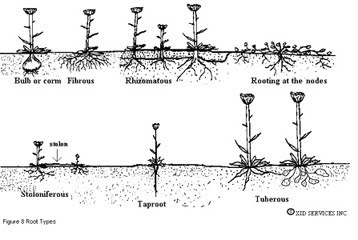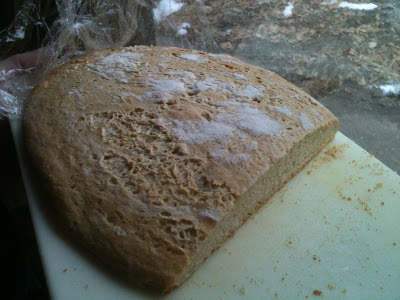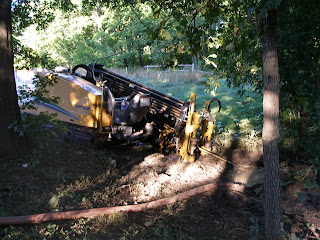How do Cropping Systems affect Nitrogen Cycling in an Agro-ecosystem?
By Frequency and /or Intensity of Cultivation
Cropping systems have varied by locality since people started making gardens and creating agricultural homesteads. As Susanna Hecht stated in her paper, knowledge of these systems and their specific details were passed down from elders and related in actual experience by the culture rather than disconnected positivist science.
Seasons and crop failures taught people how to grow food and when to leave the land to restore fertility, or grow-ability as they saw it. The land was turned by hand with rough tools. More like broken up, just a seed or weeds depth so planting could begin. With the advent of the moldboard plow and progression of domesticated beasts of burden to 400 horse tractors, deep cultivation and repeated plowing reduced the organic material and biomass in the soil. It exposed the soil to air and sunlight, breaking up the root mass and soil web.
No till, ridge till or reduced tillage practices can increase the organic material in the soil by allowing crop residue to remain in place holding the soil and slowly releasing nutrients to soil organisms.
On a recent trip to an Iowa farm conservationist equated soil erosion to leaking sunlight. He said since the plants were not in place to use the sun, it turns into water that leaks from the land, causing a loss of nutrients, soil and the capacity of the land to grow crops. I thought is a fitting and creative allegory. Cover crops do not compete with the main crop but contribute to its health and the soil's supporting structure.
Legumes especially build the soil as long as they are turned into the soil and not harvested. Clover and other low profile cover crops can cool the soil, retain moisture and also generate a considerable amount of condensation on their leaves that contributes to the soil moisture. The plant itself deflects the falling rain and protects the soil. It slows down the run-off and allows for longer lasting infiltration. Again, the soil is protected, enriched and allowed to transmit and store nitrogen and nutrients through mycorrhizal fungi. Cover crops increase the available water capacity of the soil for the cash crops and reduce their susceptibility to drought.
Using Crop Rotation
Rotational Grazing of Cattle
Including livestock through rotational grazing in a cropping system completes the cycle that nature uses in forests and other Polycultures. For the most part livestock are rotationally grazed through paddocks as grasses grow back and animals cycle through the fields. Variations on this system are based on the animal, field fertility and soil health. In a complete system large animals are followed by smaller ones and nutrients are recycled through their feces and spread into the soil. Cattle are followed by chickens in a paddock a few days later allowing the manure to be laid with maggot protein. The chickens deposit phosphorus and spread the manure as they clean the field. They also eat seed and insects. From this action eggs, meat, and soil fertility are supplied by the addition of one animal to the rotational grazing system with no loss in resources or time.
Rotating the animal through a series of paddocks forces them to eat less palatable plants and not just their favorites. The animals in time learn the system and look to new fields after they have cleaned the present one. As I understand it, usually only the thistles remain and the weeds bed is reduced as animals improve the soil and grass species. This also returns organic nitrogen to the soil as water dilutes and breaks down the solids. Having not been cultivated the soil is full of micro and mega fauna ready to metabolize the nitrogen and through liberalization and immobilization make it available to the plants as inorganic N.
Biomimicry in Agro-ecosystems and the benefits of Diversity
Planting Heterogeneous Crop Varieties
Monocultures increase a crops exposure to predation by not limiting resource access to pests. Yet the crop yield is expected to be a homogeneous material ready for processing at strict tolerances. Open pollinated crops are subject to variation from the pollen relative to its source. Wind pollinated plants such as corns are vulnerable to pollen from far away plants many miles away.
The heterogeneous crop varieties have genetic variation and cross-pollinate but still remain vulnerable to the basic pests of the species. On the other hand successful strains, phenotypes, would be specifically adapted to their environment, including the pests and allowing for cross pollination would make plants and the seed collected by the grower, more likely to be resilient in the area it was grown. Locally sourced seed would be tailored to the soil and climate. In any case, a heterogeneous monoculture is still steps away from a sustainable system. The properties of the differing seeds would either build the soil of deplete it.
Selective Weeding
A weed is a plant out of place. Many "weeds" are pulled or killed regardless of their beneficial aspects. The weeds, voluntary, or pioneer plants that germinate in disturbed soil wait in a soil seed bank for the right conditions to appear. Many are tap rooted and pose little competition for the crop plants. Mechanical problems during harvesting are caused by weeds more than the loss of yield and yet if the secondary plants were allowed to increase in number, they might pose a threat to the crop. A cover crop would inhibit weeds; chickens or other fowl might be used to clean the field of errant seed. Growers might selectively pull problem weeds, but most might be better left as increased organic material. Increased organic material would mean better nitrogen availability.
Intercropping
Using a Polyculture in the form of Intercropping has many benefits. Intercropping can be done by planting a second crop or species between rows of trees, vines, or alternating mechanized planter widths with strips of rotated crops as said above with crop rotation. But for the most part, reducing the bare soil between plants will decrease erosion and evaporation. Some plants work in tandem supplying each with nutrients or minerals from root zone partitioning. Deep tap roots can bring moisture to the surface allowing for less irrigation in spite of increased plant numbers. As successional progress is made some weed niches will change as they modify the soil regime. In natural settings the plant niche changes as soon as the weed appears. Soon grasses and perennials take over and the weeds are pressured out by the changes they initiated. That is their role in the dynamics of open soil to dynamic plant systems. If an established ground cover of "weeds" is utilized, soil resources are improved. Nitrogen fixing Legumes are often intercropped with alternating rows. Vines and Shrubs benefit from this practice.
Intercropping is labor intensive depending on the proximity of the plants. Hand planted gardens or fields can be closely intercropped with early harvested plants making room for later as with SPIN farming or biointensive practices (Jon Jeavons) where plants are rotated through as the season progresses. Forests are highly intercropped with many layers of plants from canopy to understory, to shrubs and ground covers. Even the soil is intercropped as it is partitioned with roots of various types. Again the distance between like plants limits the access to herbivorous insects and disease. Aromatic confusers such as dill, Nasturtium and onion can separate plants and deter insect damage, as more energy is needed for the pests to find the plants. With the Three Sisters plant guild the intercropping facilitates the growth of each plant using its natural mechanisms. Corn being the overstory, Squash being the ground cover weed suppressor and beans being the nitrogen fixing vine and understory; a common intercropping technique. Plants in close proximity can benefit from mutualism; a benefit each derives from the association with the other. This system requires little maintenance. Less cultivating mean less compaction and erosion, more N.
Blended Seed Mixtures
Using quality seed from a vendor or personal stock is important for viability. Choosing seeds for planting starts far before it is time to plant. Specific plants are grown for harvesting seed. Locally produced seeds are tested for the climate. Blending different seeds in planting takes careful consideration of the relationships between the plants. Selection is influenced by species, cultivar, planting date, planting rate, fertility and soil type, winter conditions, and growing region.
Incompatabilities / Compatabilities
Certain families of plants compete or deter growth. For example, Brassica and Nightshade are two plants not to be interplanted due to the chemicals in decayed roots of Brassica. Lettuce and Potatoes plants are specifically susceptible to Brassica. On the other hand Naturtiums and Coriander can reduce Potato Beetle Larvea (Carr, 1995) and Horseradish is reported to build disease resistance. The growing plant also deters potato eelworm. (www.pfaf.org).
Plant database files shoe many plnats families that are incompatible while interplanting others will enhance production, flavor, nutrient uptake and resistance to disease and insects.
Form and Rooting
 Interlanting considerations include root structure. Seeds of similar root type will compete for resources. Partitioning the soil with diverse root ypes will ensure available water and nutients. The form of the plants above ground must be also compatible. Columnar plants will reach high while lower ground covering plants will cover bare soil and deter weeds.
Interlanting considerations include root structure. Seeds of similar root type will compete for resources. Partitioning the soil with diverse root ypes will ensure available water and nutients. The form of the plants above ground must be also compatible. Columnar plants will reach high while lower ground covering plants will cover bare soil and deter weeds.
Disease loss concerns
Although interplanting increases biodiversity, properties of the individual plants can have both positive and negative effects. Some plants harbor the pathogens that damage other plants. Barberry, Berberis thunbergii, harbors the Wheat Stem Rust fungus, Puccinia graminis (USDA). Cedar trees tolerate spores causing Cedar Apple Rust, Gymnosporangium juniperi-virginianae (the cultivar Delicious Apples are immune), YODER AND BIGGS, 2008, West Virginia University.
In an agro-ecosystem design using diverse seeds in planting filed crops, the pattern the seeds are planted is important for maximum yield. Homegeneous mixing of the seed is less efficient than patchy dispersal allowing groups of plants to germinate together. Patchy patterns slow the spread of disease better than intermixed plants in close proximity. (Field Crops Research Volume 110, Issue 3, 28 February 2009, Pages 225-228)
A farmer may not have the equipment to plant seeds of differing sizes or harvest differing plants. Germination periods, phenology and the mear dynamics of planting two or several species in a field may be beyond the capacity of a farmers experience or time. Seperating the harvest may also be problematic.
Anecdotally, I heard of a farmer who planted winter wheat. In the spring the wheat did not sprout again so he planted peas (I believe). The two crops quickly grew together with mutual facilitation and flourished to the surprise of the farmer. At harvest he had two crops with little yield loss and mechanically seperated the two.
Herbicidal seeds may present a problem when mixing seed. The hybrids may cause damage to other species or be mutually destructive. Plants that take differing nutrients may deplete the soil even faster unless diligence is taken to ensure the soil fertility through one of the plants used. A nitrogen fixing plant would well be one of the participants.
With all these techniques, a diverse and adaptable regime helps to adjust for the changing conditions in and above the soil. Cycling Nitrogen through the soil is best when it brings the elment back into the soil and stored in reach of the plants. Nitrogen out of reach from tillage. leeching and erosion requires more to be added to the soil through additional plants, chemicals and the expensive fuel to make it happen. Cropping systems that conserve Nitrogen, conserve resources.


Comments
"Permaculture [Permanent Agriculture],
Polyculture [Self Sustaining Plant Systems],and
Biomimicry [Nature as Model, Mentor and Measure]."
Just want to THANK YOU for your articles and your work. Many Blessings on you and your loved ones. You are part of humanity's needed rEvolution and your work is good. OneLove!